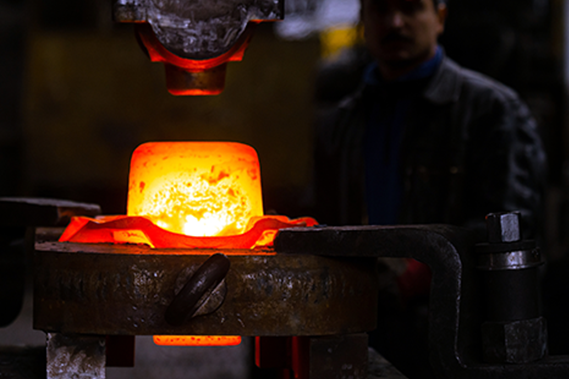Clutch auto component forging plays a critical role in the production of various components used in automotive clutch systems. The clutch is a vital part of a vehicle’s transmission system, responsible for engaging and disengaging the engine from the transmission to allow for gear changes and smooth operation. Here’s a brief overview of clutch auto component forging:
Process Overview: Clutch auto component forging involves the shaping of metal to produce various clutch-related parts using localized compressive forces. The forging process typically begins with heating a metal billet or ingot to a high temperature and then applying compressive forces using forging dies to shape the material into the desired form. Different forging techniques may be employed, including closed-die forging, open-die forging, and impression-die forging, depending on the complexity and size of the component.
Components Produced: Several clutch-related components are commonly produced through forging, including:
- Clutch Discs: The clutch disc is a friction disc located between the engine flywheel and the transmission input shaft. It transfers power from the engine to the transmission when engaged and allows for smooth gear changes when disengaged. Forged clutch discs offer high strength, durability, and consistent friction characteristics.
- Pressure Plates: The pressure plate applies pressure to the clutch disc against the flywheel, engaging the clutch and transmitting power from the engine to the transmission. Forged pressure plates are known for their strength, stiffness, and reliability, ensuring consistent clutch engagement and disengagement.
- Flywheels: The flywheel is a rotating mechanical device attached to the engine crankshaft. It provides inertia to smooth out engine power pulses and helps maintain consistent engine speed. Forged flywheels offer high strength-to-weight ratios, reducing rotational inertia and improving engine responsiveness.
Advantages of Forging: Forging offers several advantages for producing clutch components:
- Strength and Durability: Forged components exhibit superior mechanical properties, including high strength, toughness, and fatigue resistance, essential for the demanding conditions of clutch operation.
- Dimensional Accuracy: Forging processes produce components with precise dimensions and tight tolerances, ensuring proper fit and alignment in clutch assemblies.
- Material Utilization: Forging minimizes material waste by utilizing the metal’s grain structure to achieve the desired shape efficiently.
Applications: Forged clutch components are used in a wide range of vehicles, including passenger cars, commercial vehicles, and off-road vehicles, ensuring reliable clutch performance and smooth gear changes.
In summary, clutch auto component forging is a critical manufacturing process for producing high-quality, durable components essential for the operation of automotive clutch systems. With its advantages in strength, durability, and dimensional accuracy, forging remains a preferred method for manufacturing clutch components that meet the stringent requirements of modern vehicles.










Reviews
There are no reviews yet.